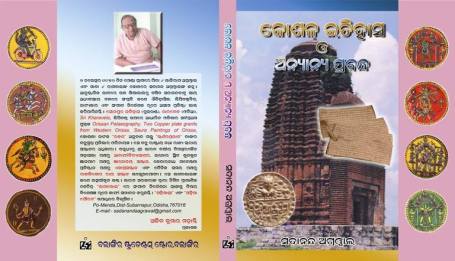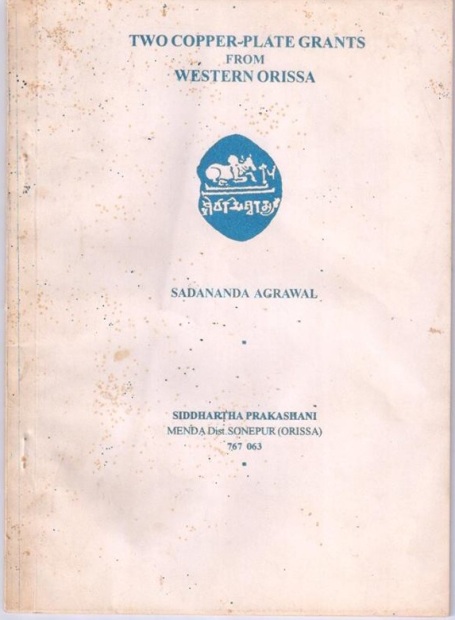Posts filed under ‘Sadananda Agrawal’
Tel valley civilization: Riverside kingdom traced in copper plates
Following is a report from The Telegraph:
Balangir, Dec. 8: Eminent historian and epigraphist Sadananda Agrawal revealed that both sides of Tel river valley were dotted with principalities in the late 8th century AD.
Agrawal came to this conclusion after going through copper plates which were found in Kapsila village near Balangir.
Recently, a local Brahmin had handed over the copper plates to Sadashiva Pradhan, a professor of archaeology in Utkal University. He, in turn, sent it to epigraphist Sadananda Agrawal for deciphering.
Talking about his discovery to The Telegraph, Agrawal said that the copper plates talked about history of Tel river valley in Balangir in 8th century AD.
“The charter issued consisted of three copper plates tied together by a circular ring and issued by a king named Khadgasimha. Paleographically, the charter has been assigned to late 8th century AD and it informs us about new rulers in the Tel valley,” Agrawal said.
Agrawal said that small principalities in the valley were established by chieftains.
“The copper plates do not mention anything about any particular dynasty or place. So it is certain that both sides of the Tel river valley had small states ruled by local chieftains belonging to different clans. The Udayapur area, the capital of Rashtrakuta kings, who ruled in the valley, is still dotted with standing structures and ruins. These are mostly found at Amathgad. Ruins of a medieval fort is also found there,” Agrawal said.
“Proper archaeological exploration is needed to enrich the medieval history of the area,” he added.
Four copper plates, which were found earlier in Teresingha, also spoke of the Tel valley civilisation.
Sadashiva Pradhan, archaeologist at the Utkal University had earlier excavated the Gumagad site in the Tel valley, where he found that a strategic military hub existed in 1st century BC. It was set up by a king contemporary to king Kharavela.
“Last year, we had submitted a memorandum to the governor demanding preservation and further excavation of the area. The area needs extensive excavation”, he said.
Following is another report from expressbuzz.com:
BALANGIR: While Gumagad, the first century BC military strategic hub, speaks volumes of a flourishing kingdom in the Tel river valley, a copper plate recently found at Kapsila village in Balangir district hints at existence of several kingdoms on either side of the valley.
Historians, who recently evinced interest in exploring more facts about the valley civilisation, opined that further excavation can unravel the history buried under the earth. This copper plate was interestingly found near the archaeological site of Kharligad near Gumagad.
Utkal University Archaeology Prof Sadasiva Pradhan, who got the copper plate from a Brahmin, said it contains information regarding the civilisation. He, however, had sent it to eminent epigraphist Sadananda Agrawal for deciphering.
According to Agrawal, as per the information on the copper plate, the civilisation dates back to the 8th century AD.
“The Udayapur area, the capital of Rashtrakuta kings who ruled the valley, is still dotted with standing structure and ruins. These are mostly found at Amathgad. Ruins of a medieval fort too exist here,” said Agrawal.
Earlier, Prof Pradhan had excavated the Gumagad site, where he found a strategic military hub of the first century BC. It was set up by a contemporary of King Kharavela.
Studying further into the formation on copper plate, Agrawal said that a king called Khadgasingha had donated a village Remudaka (modern Remanda) in Saintala. This also throws light on the civilisation.
He feels that further excavation by expert archeologists with the government’s support would shed more light on the civilisation.
The other four copper plates found earlier at Terssingha village also spoke of the Tel valley civilisation.
Those plates had information regarding the two capitals – Udayapur and Parbatadwaraka – which were under the rule of Rashtrakutas and local chieftains belonging to different clans.



